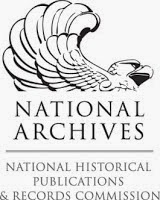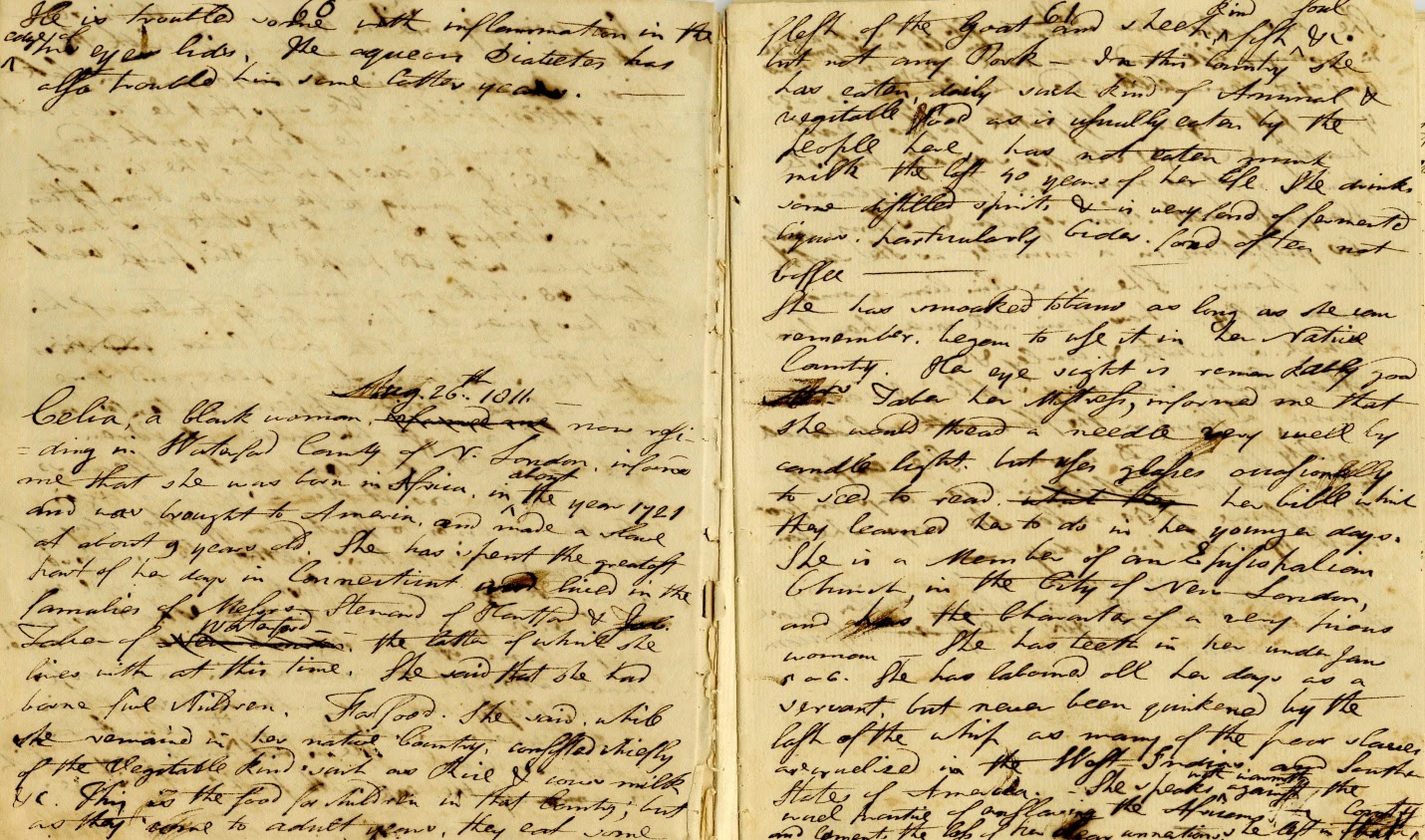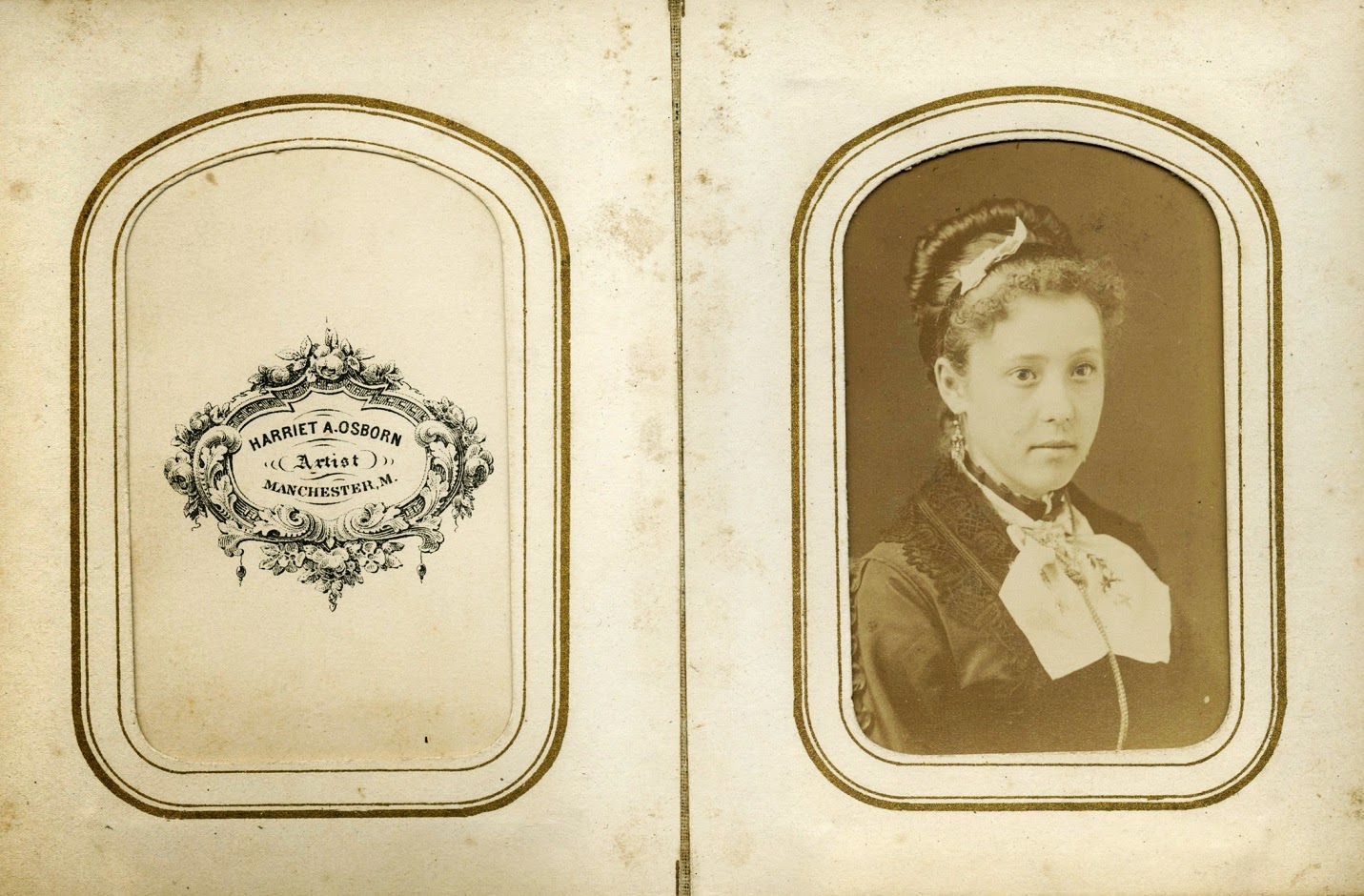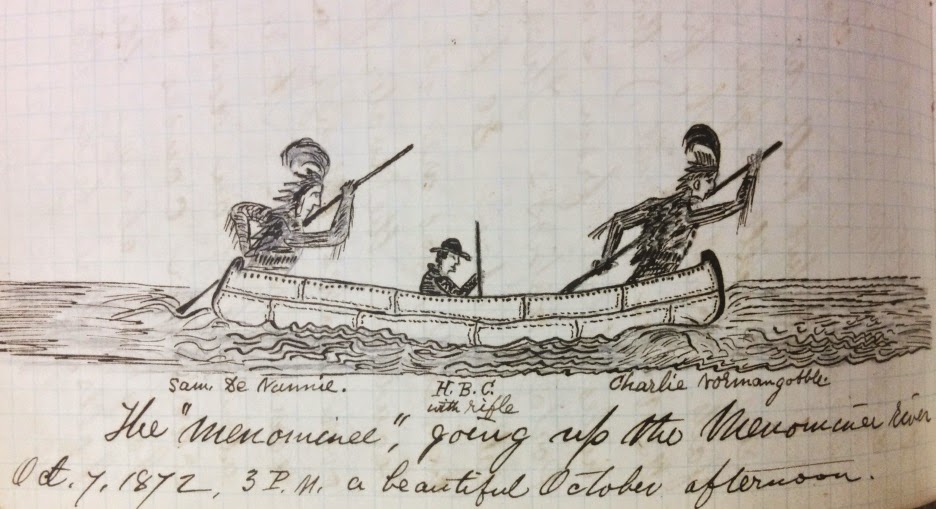 The Manuscripts Division at the Clements Library is proud to announce the completion of a National Historical Publications and Records Commission’s (NHPRC) processing grant, which began in 2011. Former Curator of Manuscripts Barbara DeWolfe, current Curator Cheney J. Schopieray, grant-funded project archivist Megan Hixon, and a staff of volunteers, work-study students, and interns completed the two and half year grant to create online finding aids and catalog records for over 1,600 collections – a total of 646 linear feet. Part of this work included descriptions of 125 photograph albums.
The Manuscripts Division at the Clements Library is proud to announce the completion of a National Historical Publications and Records Commission’s (NHPRC) processing grant, which began in 2011. Former Curator of Manuscripts Barbara DeWolfe, current Curator Cheney J. Schopieray, grant-funded project archivist Megan Hixon, and a staff of volunteers, work-study students, and interns completed the two and half year grant to create online finding aids and catalog records for over 1,600 collections – a total of 646 linear feet. Part of this work included descriptions of 125 photograph albums.
The collections date from the 17th to the 20th century and represent many topics of historical research, such as business and trade, education, sports and leisure, slavery and anti-slavery movements, Native American history, politics, travel, westward expansion, religion, and military conflicts. Many of the finding aids highlight the history of minorities and groups that tend to be under-represented in the archive.
The project has reduced the manuscripts division backlog to 197 collections (of 2,546), most of which are Spanish-language materials, recipe books, later 20th century military materials, and recent acquisitions. The 125 photograph album finding aids (part of the library’s Graphics Division) are one of the first two groups of the division’s EAD records available to the public. The Graphics Division’s finding aids became available online in mid-June 2014, thanks to the efforts of the University of Michigan’s Digital Library Production Services (DLPS), and the NHPRC-funded descriptions now provide some of the first access points to this previously invisible, though rich, set of research materials.
The William L. Clements Library extends its most sincere thanks to the NHPRC for its generous contribution to this project.
For records associated with this grant, search our finding aids and catalog for the term “NHPRC.”
Examples of NHPRC-funded finding aids include:
- Lydia Harper collection, 1822-1830. Catharine and Condy Raguet, who lived in Brazil while Condy served as U.S. consul to Rio de Janeiro, sent 11 letters to their niece, Lydia Harper, describing their domestic slaves and stories about enslaved Brazilians, including the experiences of two children’s capture in Africa.
- Hiram B. Crosby journal, Duane Norman Diedrich Collection, 1872. Crosby took a prospecting trip to the iron mines of Northern Michigan, in 1872. He described the area’s Native American population and included several pen and ink drawings that feature his Native American guides.
- James Gibbs collection, 1843. Six documents provide insight into a lawsuit between James Gibbs, a free African American, and Joseph E. Embertz over the possession of a “spotted sow.”
- Vine Utley, Observations on Old People 80 Years of Age, 1809-1827, Duane Norman Diedrich Collection. Utley interviewed elderly residents of New London County, Connecticut, from 1809 to 1818, and reported on their ages, families, dietary habits, and physical and mental health. Entries include information about a man who had been held captive by Native Americans, a Native American woman, and a Black woman who had been born in Africa and enslaved at nine years old.
 |
| August 16, 1811, entry regarding Celia. Vine Utley, Observations on Old People 80 Years of Age, Duane Norman Diedrich Collection, William L. Clements Library, University of Michigan |
- Leopold Mayer Family collection, 1864-1970. 0.25 linear feet of correspondence, a journal, a speech, documents, and genealogical research related to Leopold Mayer, his family, and Chicago’s Jewish community in the late nineteenth and early twentieth centuries.
- Henry Brevoort Eddy letters, 1895. Eddy penned 14 illustrated letters, wherein he described his social life in Tuxedo Park, Mamaroneck, and New York City. Included in these illustrations are depictions of men, women, and children in bathing suits as well as several images of an African American doorman that make especial note of his clothing while off-duty.
- Southwest Territory and Mississippi Territory collection, 1794-1818. This collection is made up of 46 letters and documents related to the Southwest Territory and Mississippi Territory. The materials concern subjects such as governance and law, militia units, property ownership and finance, slavery, and Native American tribes. The collection includes post-statehood letters by Andrew Jackson and other prominent politicians and military figures.
- Women Photographers carte-de-visite album, Frederick P. Currier Collection, [1860s-1880s?]. This carte-de-visite album contains 21 studio portraits made by female photographers and husband-and-wife teams in the United States and England.
 |
| Example portrait from the Women Photographers carte-de-visite album, Frederick P. Currier Collection, William L. Clements Library, University of Michigan. |

